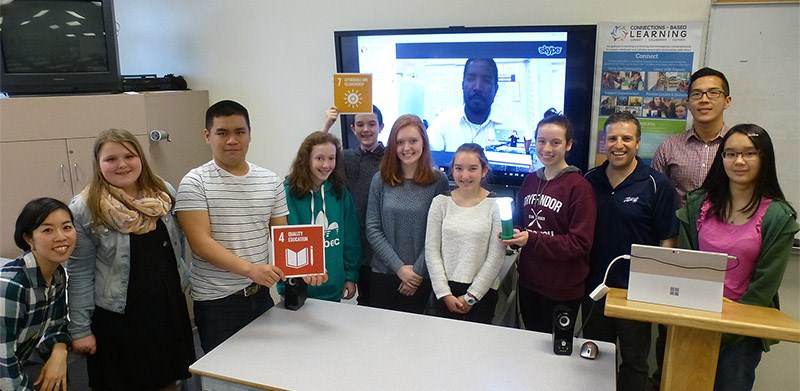Riverside secondary students are learning how to be team players in a project to bring light to impoverished areas of the Dominican Republic.
Last fall, Sean Robinson's Science 9 students built prototype lights for the Dominican Republic, with some funds raised by Riverside and Pitt River middle school kids. Now, Grade 11 students in high school's science and technology class are helping out with the Engineering Brightness project, making it even bigger than before.
"I'm trying to create meaningful experiences for the students and for teachers, as well," said Robinson, who is championing a new learning style called connections-based learning.
At a progress meeting held recently, students got to find out via Skype what was happening with the prototype lights that Riverside science students built and tech ed teacher Abraham Kang delivered to the Dominican Republic while on a spring break vacation.
They heard Eladio Madé, a teacher at the Community for Learning School in Santo Domingo, describe how his students are using the Riverside prototype to build lights with recycled materials that will be distributed to families living in sugar-growing settlements, called "bateys."
"This was an opportunity to learn while doing something to make a difference," Madé said.
Student Kaleb Guthrie, whose solar-powered light was chosen for the trip to the Dominican Republic, said he was excited to be creating something useful for people. Janna Grant, a Grade 9 student, said she couldn't have raised the necessary funds without the support of Pitt River students.
Robinson, who believes students learn best when they have an idea worth pursuing, said he's thrilled to see the project come to fruition.
According to Robinson, who has a blog and a website (www.connectionsbasedlearning.com) his style of teaching encourages teamwork, community service, questioning experts and then sharing the results.
"This approach is the why — why do we do things in the classroom," he said, explaining that the Engineering Brightness project started with a tweet to other educators last fall.
Subsequently, Robinson got in touch with Madé, who explained to PoCo students the problems of poverty in the Dominican; students also Skyped with a class in New Brunswick to get some ideas about building their own lights.
The local students also designed and printed lantern exteriors using a 3D printer, and researched other sources of energy for the lights, including kinetic energy, and kept a history of their work using a video.
"You could probably go to the store and just buy a light but this is creating one and making one," Robinson said.
Is connections-based learning the future of education? It may just be as teachers put flesh on the bones of the new curriculum.
In the meantime, Riverside's bright idea will be a light idea for families in the Dominican Republic that don't have a consistent supply of electricity.



